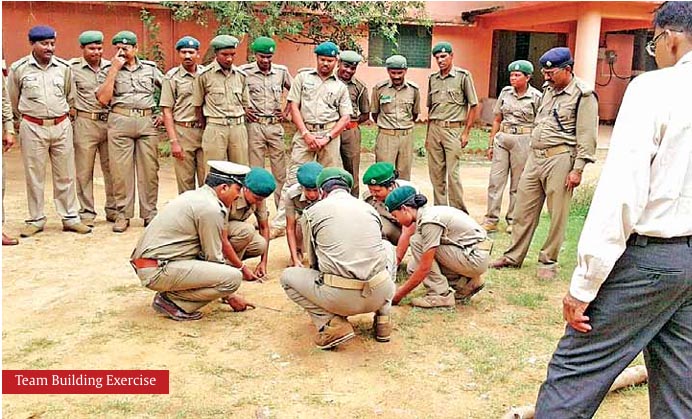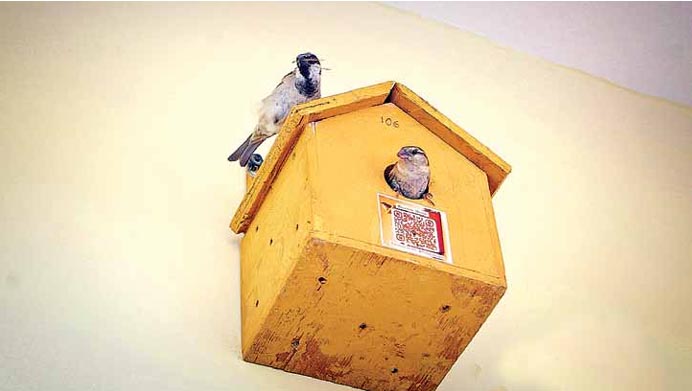
Revival of Sunabeda Wildlife Division – A Case Study
By Vishwanath Neelannavar, IFS
Sunabeda Wild Life Sanctuary is named after an Adivasi village “Sunabeda” situated at the centre of the Sunabeda plateau. The goddess ‘Sunadei’ temple is famous in the district Nuapada. Declared as a sanctuary in 1983, it is known for its richness in flora, fauna, zoological, geomorphological, ecological and anthropological values. The sanctuary is located atop of a plateau along the western fringes of Odisha adjoining interstate boundary between Odisha and Chhattisgarh and situated between Latitude 200-24’-00’’ to 200-44’-00” North of equator and Longitude 820-20’-00” to 820-34’-48” East of Greenwich. The sanctuary has an area of around 600 Sq. K.M. out of which 243.60 Sq. K.M. comes under the core zone and the remaining 356.40 Sq. K.M comes under the buffer zone. This area is notified under Section 18 of Wildlife Protection Act, 1972 vide notification No. 8F (W)
40/88- 10772/F.F.A.H. DT. 10.5.1988 of the erstwhile Forest Fisheries & Animal Husbandry Department, Government of Odisha in supersession of the previous notification issued in the years 1983 and 1986. The entire sanctuary area comes under the administrative control of Sunabeda Wildlife Division with its headquarters at Nuapada district.
The sanctuary is inhabited by various tribal and social groups. Bhunjias and Paharias are the most dominant tribal groups in the area. In recent years, the sanctuary is facing severe Naxal problems. Because of its dense forest cover and inaccessibility, the area has become safe havens for the Maoist. The Maoist activities have severely affected the
movements and development work of the forest department and the other government departments. The killing, kidnapping and threatening of forest officials and villagers have created an environment of insecurity and disturbance. Some of the incidents of Maoist activities, that have occurred in the sanctuary related to the forest department, are
noted herein. The movement of the Maoist started in 2006 at a slow pace. There were a few scarce and unreported incidences of Maoist activities. In 2009, they ransacked
Sunabeda Range Office building and Chereichuan check gate and burned several official documents and looted all the cameras, binoculars, walkie-talkies and money. They had kidnapped and beaten

anti- poaching watchers Sri Amar Majhi and Mansingh Sagaria, who were released later on. In the first half of November 2009, they had ransacked Soseng Beat Office and killed Sri Kirish Rout, antipoaching watcher of Kotrbeda village. In April 2010, they killed Sri Sangram Keshari Swain, Forester, Katingpani Section at Bharuamuda check gate and damaged
the section office buildings and the records. In 2010, the Maoists had damaged Katingpani beat quarters and destroyed all the official records and materials. In September 2010, the Maoists ransacked, destroyed and burnt Sunabeda Wildlife Range Office.
Many anti-poaching watchers have also been assaulted and threatened during this period, which led them to quit their respective jobs. In 2010, they had destroyed a watch tower located near Raital bandh water body under Maraguda section. Considering these violent activities, the movement and efforts of the forest officials in the sanctuary ceased
to a great extent in the second half of 2010. The psycho fear spread like a wildfire which affected the livelihood of the forest dwellers and the growth of the villages inside the sanctuary. The activities of the Maoists had a long and deep impact on the socio-economic life of the villagers residing in and around the sanctuary area.
The new beginning
In February 2014, senior officers visited the sanctuary and inspected the forest areas and found them in disturbing condition. None of the frontline staff were venturing into the forest or interacting with the villagers. All the forestry activities were at standstill. The new phase was initiated in 2015-16, field personnel called for regular meetings to get inputs. The villagers were invited along with the sarpanch for meetings over working lunch or tea to get the basic details to frame a strategy. Health checkups and veterinary camps were the activities initiated to gain the confidence of the villagers to start with.
Methodology
The outcome of the meetings was that there was no support from the villagers for the forest department due to fear of psychosis and trust deficit. About 60% of the newly recruited forest guards and foresters had little exposure. After identification of the issues, possible solutions were listed out in consultation with the frontline staff. Several confidence building measures like meetings inside the villages and giving a patient hearing, inviting the villagers and the sarpanch to the division and range office for discussing the emerging issues on forest and wildlife protection and conservation were initiated. Repeated training and field exposures were undertaken for the forest staff. Youths from the Maoist affected villages were chosen and a series of training programs was imparted to them in detail along with the frontline staff on forestry topics. A tiger census was undertaken in the division. Detailed hands-on training along with field trials were organised to emphasise the importance of carnivorous sign survey to detect and record direct and indirect signs, PML and PMB. Plaster cast preparation and laying etc. were explained along with practical

training and trials. The youth were then tested in these techniques by giving demo pugmarks and signs. Then teams of local youth and frontline staff were formed as per the sensitivity of each location. Only villagers were deputed in the forest areas with heavy Maoist movement while teams consisting of forest personnel, villagers and watchers were formed in the other areas. All the teams were asked to fill up the forms in the field trials by themselves so as to minimize the errors and it was followed by hands-on Plaster Casts and PIPs. The field staff also conducted socio-economic surveys in the entire division. Help of a sociologist was taken to impart the necessary training in ad
dition to several ice-breaking exercises for better coordination and team spirit within the heterogeneous teams. The frontline staff interacted with the villagers and gave a patient hearing to their version. The staff themselves filled in the forms and the analysis part was done within the division. Later on, several forestry activities like road repair, SMC works, construction activities, habitat improvement etc. were undertaken.
Results
An important and systemic result was that the villagers started supporting the forest staff in all the forestry activities. There was considerable change in the confidence and the motivational level among the field staff. The staff participated in the Gram Sabha meetings regularly and the villagers were engaged in the forestry activities. The tiger census was a big hit wherein the staff did a commendable task and over 75% of the area was covered with the help of the villagers. About 25 indirect signs were recorded with clear pug mark plaster cast and over 10 different casts and rake marks were recorded. Kills were also recorded in a few places. There was a sense of involvement and confidence observed among the field staff after the successful completion of the tiger census. It was a moment of pride and prestige for the division when the report was sent to the head office for scientific analysis. The Tiger Estimation Exercise played a key role in bringingthe division to normalcy in addition to other endeavours.
The socio-economic survey was a key factor in understanding the life of the tribal villagers post the Maoist phase. The newly recruited staff could understand the dynamics of the villagers within a short time. The tiger census, which was pending for 11 years, was successfully conducted. The Eco Sensitive Zone was drafted and sent to higher authorities for approval. Many proposals were submitted in consultation with the frontline staff regarding SMC, large water body, CATP (Catchment Area Treatment Plan) etc. in order to provide continuous work and hence ensure constant wages for the villagers
Related Posts
Microhabitat charateristics and distribution of ground dwelling scorpions in central india
Microhabitat charateristics and distributionof ground dwelling scorpions in central india By Pragya Pandey, Sanjay…
The Sparrow House Journey: Transformative Impact of PBL from Classroom to Communities
The Sparrow House Journey: Transformative Impact of PBL from Classroom to Communities By Dr. Archana…
Renganathittu – The fascinating Bird Sanctuary
Renganathittu – The fascinating Bird Sanctuary by T. L. John Ranganathittu Bird Sanctuary in Karnataka…
‘SWOT’ analysis of a leopard rescue operation
‘SWOT’ analysis of a leopard rescue operation By Manish Singh, IFS and Rakesh Kumar Singh…




